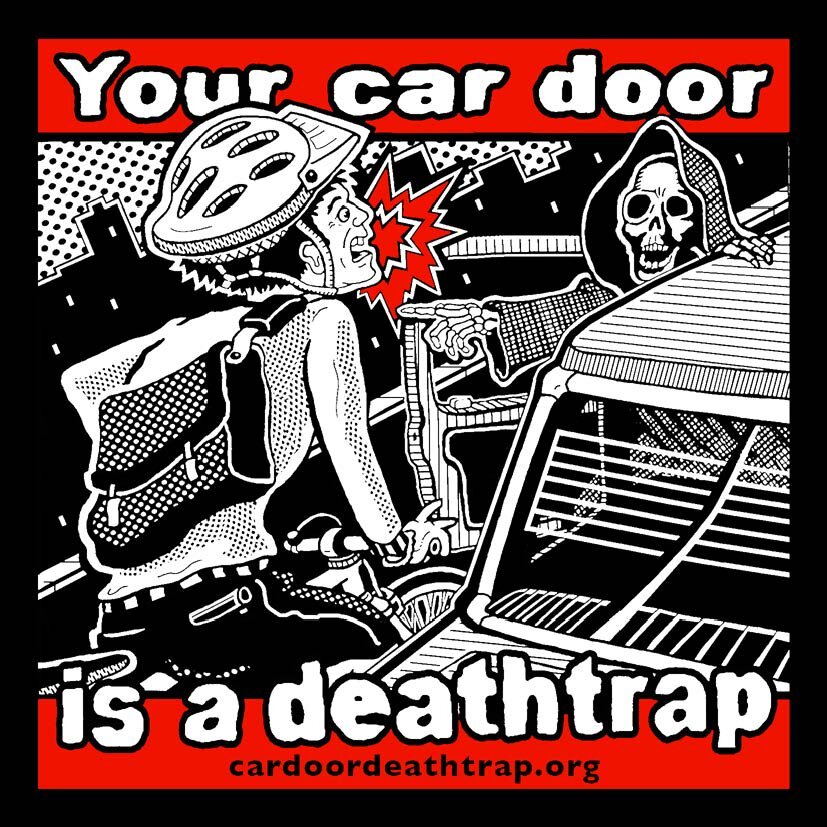Doored Cyclists of the World - Dooring Video Compilation (2019)
Why Cyclist drive in the middle of the road.
Dooring can happen when a driver has parked or stopped to exit their vehicle, or when passengers egress from cars, taxis and rideshares into the path of a cyclist in an adjacent travel lane. In many cities across the globe, doorings are among the most common and injurious bike-vehicle incidents.
Many countries are aligned with the Vienna convention which states: "It shall be prohibited to open the door of a vehicle, to leave it open, or to alight from the vehicle without having made sure that to do so cannot endanger other road-users." (Article 24 — Opening of doors).
Most areas have laws that require car users to check for all oncoming traffic including cyclists before opening the door of their vehicle. Some jurisdictions also consider it a traffic code violation if vehicle doors are unnecessarily left open and thus continue to obstruct an adjacent travel lane.
Despite such laws, serious injuries and deaths continue to be caused by occupants opening doors or by bicycle riders riding in the door zone. A 2015 British survey found that 35% of drivers self-reported that they did not check for traffic before opening their vehicle's door to exit.
The problem lies with avoiding this 5 feet (1.5 m) zone, which should be part of the parking zone, when there is a bike lane or the perception by law enforcement or motorists that one should be riding their bike out of the travel lane to not impede faster motorized traffic. In most jurisdictions, a cyclist is considered a driver/operator of a vehicle afforded the same rights as the driver of a motor vehicle; however, in some jurisdictions cyclists are further restricted by laws such as "ride as far right [or left] as practicable."
From a cyclist's point of view, "practicable" includes safety, and safety is noted in many of these laws through exceptions; however, many law enforcement, judges, motoring public and even cyclists stop reading at "as far right." Most motor travel lanes adjacent to a bike lane are only 10–11 feet (3.0–3.4 m) wide, so if a cyclist has to use that lane to avoid hazards in the bike lane, it is too narrow to safely share with passing traffic and he/she should ride in a "lane-control" method as is allowed by most of these ordinances.
